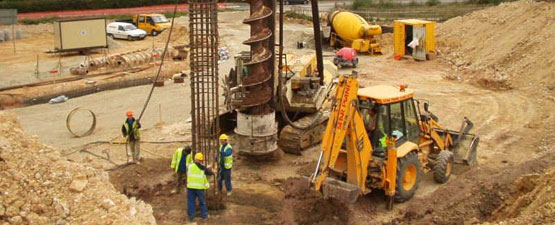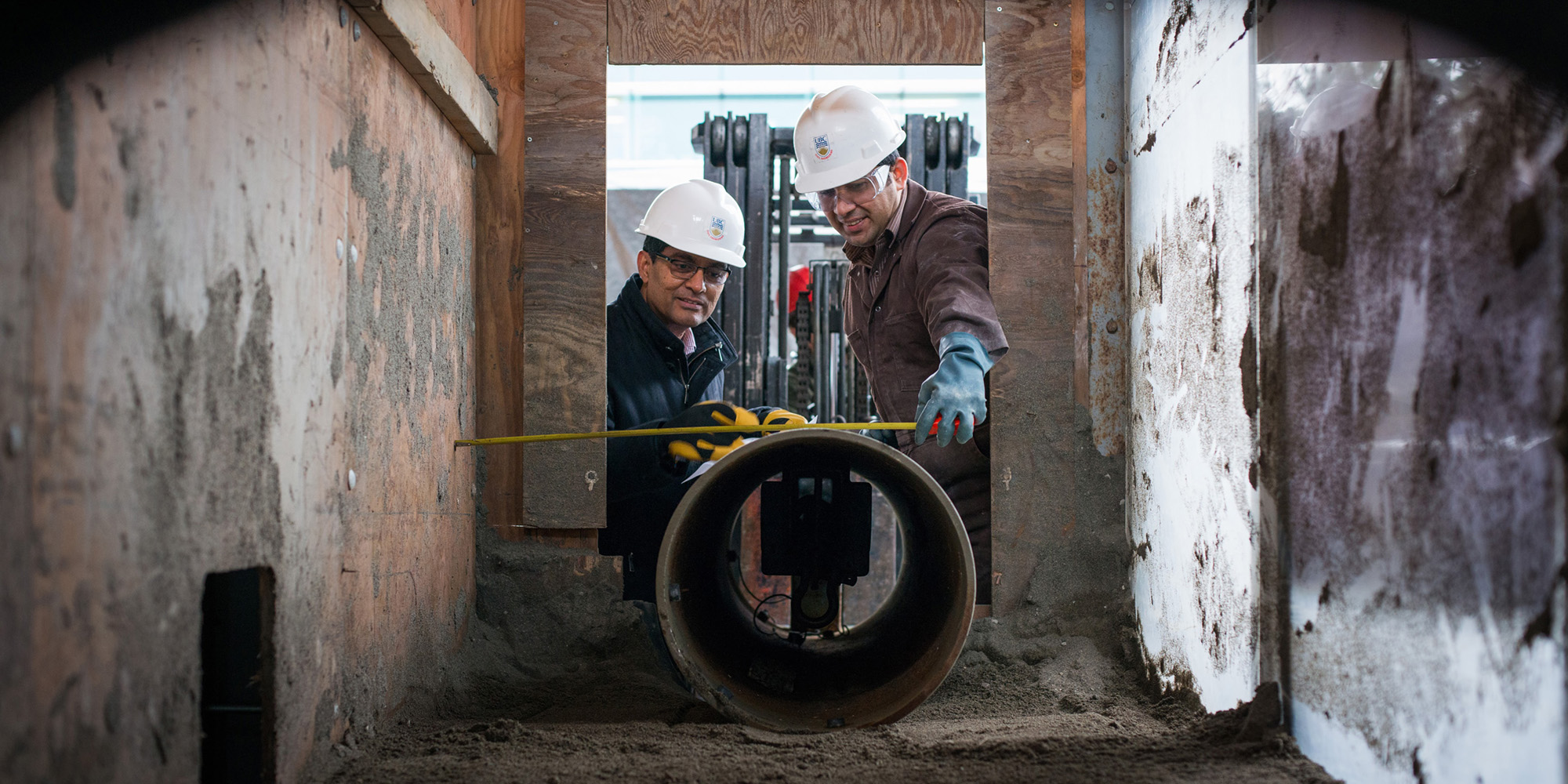A Comprehensive Overview to Coming To Be an Effective Geotech Engineer
A Comprehensive Overview to Coming To Be an Effective Geotech Engineer
Blog Article
The Necessary Contributions of Geotechnical Designers in Assessing Dirt Habits and Foundation Style for Lasting Infrastructure Growth
Geotechnical designers offer as a foundation in the world of sustainable facilities development, where their proficiency in analyzing dirt actions directly affects the security and long life of frameworks. By utilizing sophisticated methods such as Conventional Penetration Tests and Cone Infiltration Testing, they meticulously review soil residential properties, leading to informed choices on foundation layout.
Function of Geotechnical Designers

Along with site examinations, geotechnical designers assess prospective risks such as dirt liquefaction, incline security, and groundwater problems. They apply advanced design principles to establish remedies that reduce these dangers, making certain that layouts follow pertinent codes and criteria. Their job often includes cooperation with other engineering disciplines, architects, and environmental researchers to develop incorporated approaches to framework development.
Furthermore, geotechnical designers add to lasting methods by promoting making use of products and methods that decrease environmental effect. Via their extensive understanding of dirt mechanics and geology, they play a crucial role in promoting secure, resilient, and sustainable framework that meets the demands of culture while protecting the atmosphere.
Soil Habits Assessment Methods
Understanding dirt behavior is essential to informed decision-making in geotechnical design, as it directly affects the style and construction procedures. Various analysis strategies are used to assess dirt buildings, making sure exact predictions of its performance under various loading problems.
One main method is the Basic Infiltration Test (SPT), which supplies understandings right into dirt density and consistency through the resistance experienced during penetration. Cone Penetration Screening (CPT) offers a continual account of dirt stratification and in-situ strength specifications, allowing an extra comprehensive understanding of subsurface problems.
Research laboratory examinations, such as Atterberg restrictions, unconfined compressive toughness, and triaxial examinations, are important for defining soil behavior under regulated conditions. These tests promote the decision of critical specifications, consisting of shear strength, compressibility, and leaks in the structure.

Structure Layout Principles
Structure design concepts are essential for making certain the security and longevity of structures, as they dictate how tons are transmitted from the superstructure to the underlying soil. These concepts include various considerations, including load-bearing capacity, settlement, and lateral stability. A complete understanding of dirt technicians is essential for geotechnical engineers to assess the interaction between the soil and the structure.
One trick concept is the appropriate selection of structure kind, which might consist of superficial structures, such as spread footings, or deep foundations, like caissons or piles, relying on dirt conditions and architectural lots - geo tech engineering. The structure has to be made to decrease differential negotiation, which can lead to structural damages

Lasting Framework Practices
Just how can we properly integrate sustainability right into framework techniques? To achieve this, it is vital to adopt a holistic strategy that highlights the relationship in between geotechnical engineering and ecological stewardship. Sustainable infrastructure techniques begin with comprehensive website assessments, which evaluate soil behavior, neighborhood environments, and resource availability. By recognizing these aspects, designers can establish designs that lessen environmental influence while enhancing product usage.
In addition, utilizing innovative building and construction techniques, such as using recycled products and low-impact structures, substantially reduces the carbon footprint of facilities jobs. Geotechnical designers play a crucial role in selecting suitable materials that boost resilience and sustainability, such as utilizing geo-synthetics to enhance dirt security and reduce disintegration.
In enhancement, sustainable facilities techniques need continuous surveillance and maintenance to make certain that structures remain resistant in time. This consists of executing adaptive management techniques to resolve possible ecological modifications. Cooperation among stakeholders-- consisting of engineers, regional neighborhoods, and policymakers-- is essential for incorporating sustainability goals right into task planning and execution. Eventually, these methods not just add to the long life of frameworks yet additionally advertise a much healthier environment, aligning infrastructure growth with broader sustainability objectives.
Case Research Studies and Applications
Study in geotechnical engineering supply valuable understandings into the sensible applications of dirt actions and sustainable framework practices. One significant instance is the building and construction of the Burj Khalifa in Dubai, where substantial soil screening and evaluation were performed to examine the distinct challenges presented by the region's loosened sand and high water table. Geotechnical designers used advanced methods such as dynamic probing and cone penetration screening to determine the soil's load-bearing ability, ultimately causing the layout of a deep foundation system that supports this renowned framework.
An additional vital instance is the removal of the San Francisco-Oakland Bay Bridge after the 1989 Loma Prieta quake. Geotechnical assessments exposed the requirement for dirt stablizing techniques, including grouting and dirt nailing, to enhance the seismic strength of the foundation. These interventions not see this here just improved the bridge's security however additionally added to its longevity and sustainability.
Such study exhibit exactly how geotechnical designers play an essential duty in understanding dirt behavior and using ingenious solutions to ensure the architectural honesty and sustainability of framework tasks. geotechnical eng. Their experience is essential in dealing with the facility challenges postured by different dirt conditions across varied geographic places
Final Thought
Finally, the contributions of geotechnical engineers are important for the evaluation of dirt habits and the style of foundations, which are important for sustainable infrastructure growth. Via the application of innovative screening methods and cutting-edge products, these professionals guarantee the stability and security of structures while reducing environmental influences. The assimilation of sustainable practices advertises strength in framework projects, highlighting the importance of cooperation amongst stakeholders to achieve effective construction remedies that fulfill both societal and environmental needs.
Geotechnical designers serve as a cornerstone in the realm of sustainable framework advancement, his comment is here where their know-how in evaluating soil actions directly influences the safety and security and durability of frameworks.Geotechnical designers play a vital role in the layout and building and construction of infrastructure by assessing dirt and rock actions to make certain security and security. A detailed understanding of dirt technicians is vital for geotechnical engineers to assess the communication between the foundation and the soil.
Geotechnical analyses disclosed the need for soil stabilization methods, consisting of grouting and dirt nailing, to boost the seismic strength of the foundation.In conclusion, the contributions of geotechnical engineers are important for the analysis of dirt actions and the layout of structures, which are vital for sustainable facilities advancement.
Report this page